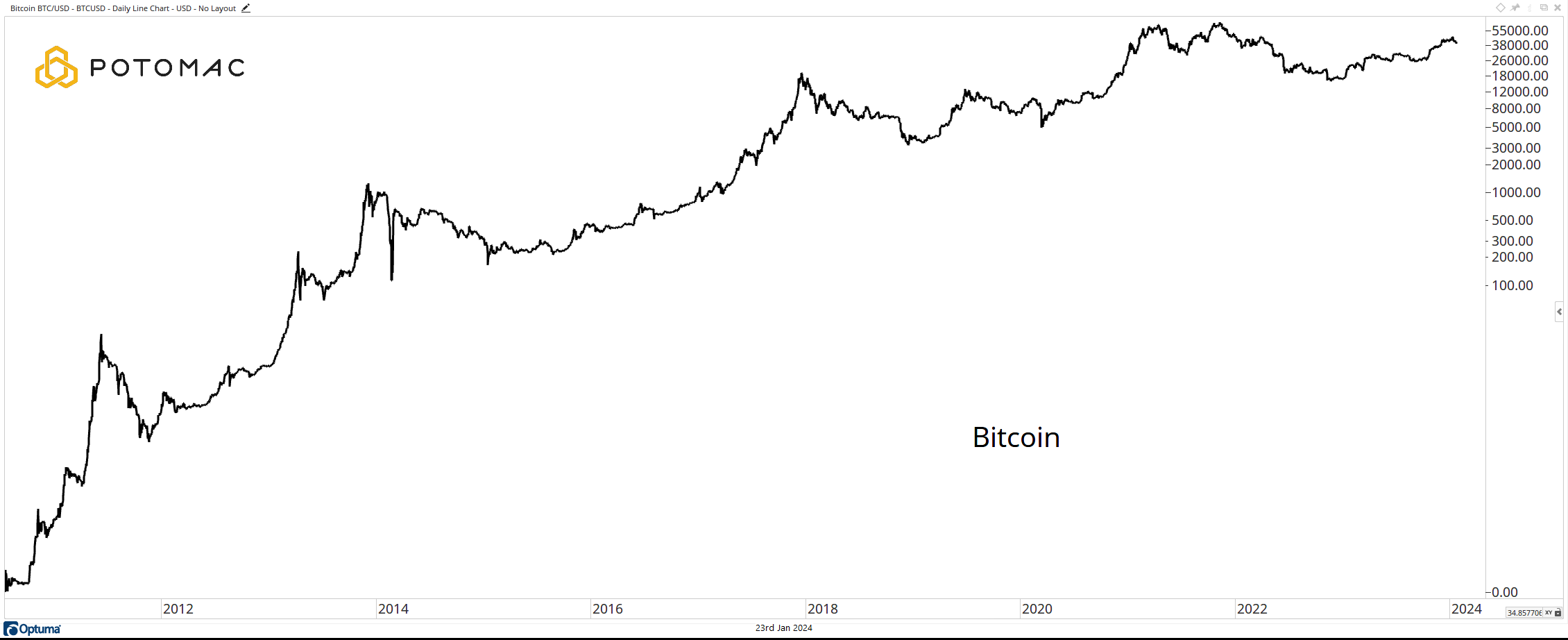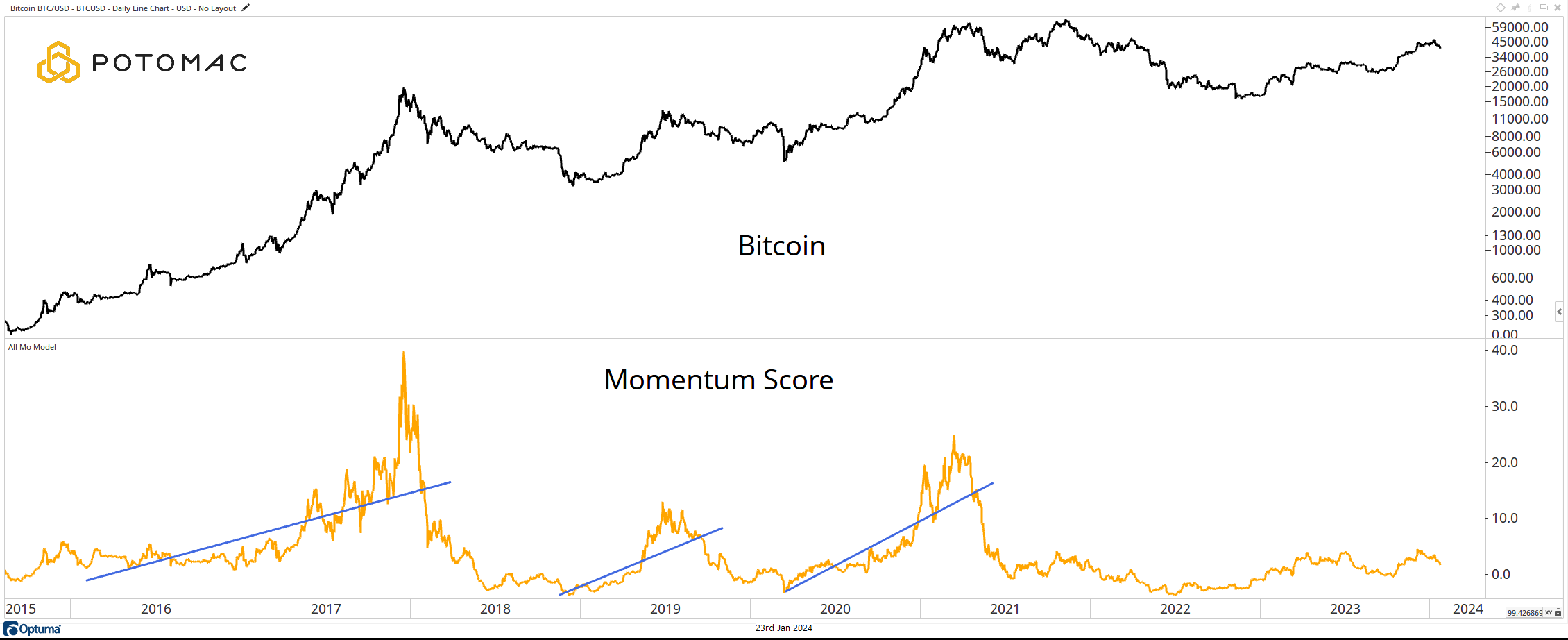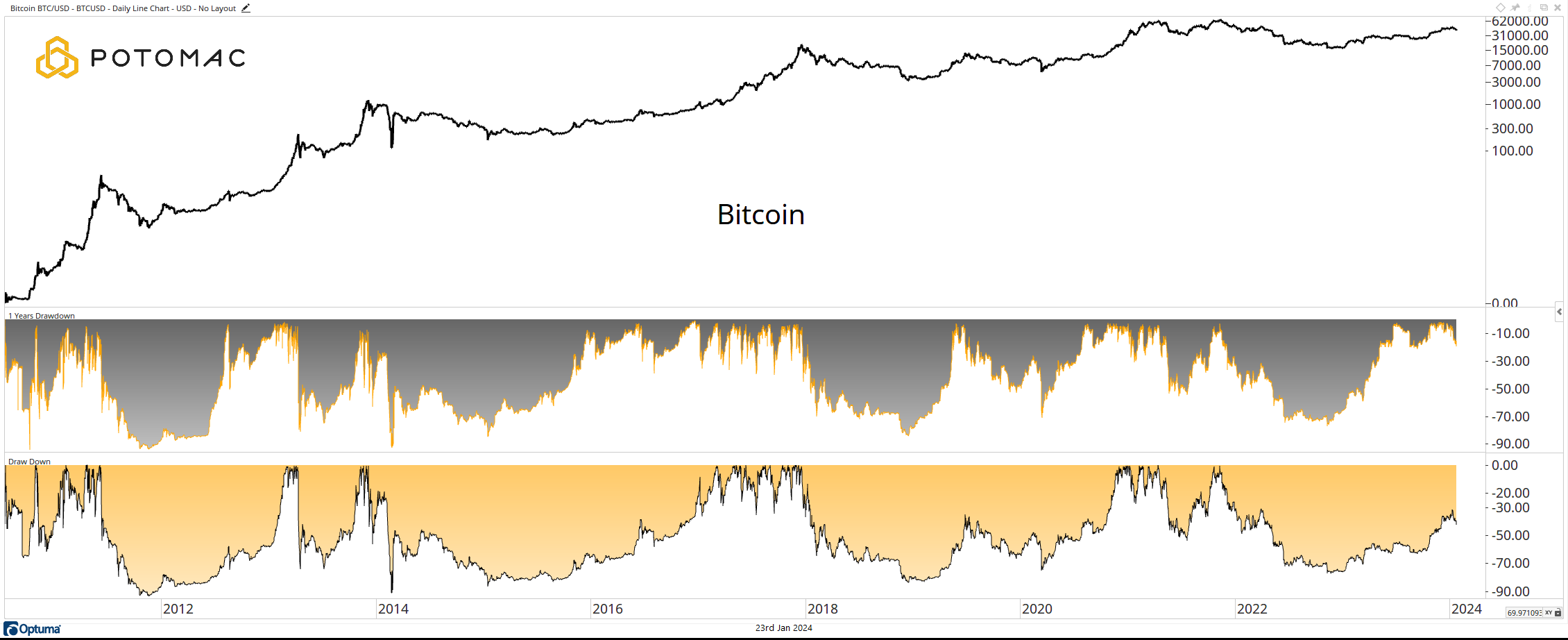
Unless you have been living under a real rock, the asset that some haters refer to as a “digital pet rock” achieved a major milestone to start 2024. I am talking about the approval of a Spot Bitcoin ETF. Followers of Bitcoin know that this is an event more than 10 years in the making. It was July 2013 when the Winklevoss twins first filed for a Bitcoin ETF. On January 10, 2024, the SEC gave the green light to the listing of 11 Spot Bitcoin ETFs.
Here is the statement from the SEC.
Those who have been following along will note that the Bitcoin acolytes were quick to jump on the final paragraph: “While we approved the listing and trading of certain spot bitcoin ETP shares today, we did not approve or endorse bitcoin. Investors should remain cautious about the myriad risks associated with bitcoin and products whose value is tied to crypto.”
What this group, some of whom live by the mantra “long Bitcoin, short the bankers,” fail to understand is that the SEC never endorses a product. The approval simply means that the tradable has met listing requirements. A quick glance at the top page of prospectus filing for iShares Bitcoin Trust makes that clear.
Likewise, the purpose of this article is not to speak of the merits of a new product. We want to outline the process that we will undertake to determine if we want to add one of these new products to one of our “momentum baskets.”
First, let’s get something out of the way for full disclosure.
I, Dan Russo, currently own Bitcoin personally. I dollar-cost-average into Bitcoin by buying a set amount on a weekly basis as long as Bitcoin is in an uptrend as defined by my own technical analysis on the product. I do not own any shares of the newly issued Spot Bitcoin ETFs.
Now that that is out of the way, let’s move on. Two of the funds that we manage employ a relative momentum strategy on baskets of ETFs. This means that all of the funds in the baskets are given a momentum score based on their performance over a blended lookback period. The top X number of ETFs are then added to the portfolio which rotates holdings on a predetermined basis. We also employ a market timing filter to determine when we want to be invested in the strategy and when we want to be in cash. That market timing filter is predominantly based on the S&P 500, NYSE Breadth Data, and Intermarket Analysis.
We want to decide if adding a Spot Bitcoin ETF to one of the baskets makes sense. Where should we begin?
First, we need data. Since the ETFs are so new, there is not enough data to give them a momentum score. However, since these are spot products, we can use Bitcoin itself as a proxy.

Since we are running a momentum strategy, it is important to know if Bitcoin has a demonstrated history of times of strong momentum. That does seem to be the case.

Next, we noted that our timing model is based on trading in the S&P 500. Essentially, we are trying to catch strong uptrends in the broad equity market. That being the case, the products that we add to the momentum baskets should have a positive correlation to the S&P 500. If the model fires when we are trying to ride a wave of higher equity prices, it would not make sense to have a product in the basket that has an inverse correlation to the stock market.
Looking at Bitcoin, we can see that prior to 2020, the rolling six-month correlation to the S&P 500 was not strongly positive or negative. It seemed to oscillate around the zero line. Then in 2020, the relationship became intensely positive until about March 2023 when the correlation started to decline toward zero.

Finally, we want to have a sense of how severe the drawdowns in the product can be. Although we tend to look at drawdowns at the strategy level. We want to have a sense for what the ride can be like. Here is Bitcoin with one-year (black) and max drawdowns (gold).

To recap, we have data, and we have an asset that appears to exhibit momentum at times. That’s good. Admittedly, the correlation dynamics are a concern, but this is just one time frame. We will have to look at others. There is downside risk based on the historic drawdowns, however we know that we will be employing a rotation strategy based on momentum scores, so this is not buy and hold.
Let’s assume that we want to move forward. The next step is adding Bitcoin to the existing momentum baskets and running the strategy. Since this is a live strategy, to add Bitcoin to the mix, some hurdles must be met. The key statistics which we will measure are:
- CAR – Compound Annual Return
- RAR – Risk Adjusted Annual Return a CAR divided by Time in the Market
- MDD – Maximum Drawdown a the maximum amount the system loses from peak to trough.
- CAR/MDD a is the return worth the risk we are taking to get it?
- Ulcer Index a measures the depth and duration of drawdown.
Adding a new fund should improve the existing strategy in at least one of these ways:
- Increase returns without a meaningful or any increase in maximum drawdown.
- Maintain the current level of returns while reducing maximum drawdown.
- Minimize or maintain the amount of time the strategy is in a drawdown.
Are we going to add a Bitcoin ETF to the current strategy baskets?
Right now, we can’t say, but these are the steps that we are going to take (along with others) to make the decision.
*All charts are from Optuma as of January 23, 2024. They are for illustrative purposes only. Past performance is not indicative of future results.
Potomac Fund Management ("Company") is an SEC-registered investment adviser. SEC registration does not constitute an endorsement of the advisory firm by the SEC nor does it indicate that the advisory firm has attained a particular level of skill or ability. This information is prepared for general information only and should not be considered as individual investment advice nor as a solicitation to buy or offer to sell any securities. This material does not constitute any representation as to the suitability or appropriateness of any investment advisory program or security. Please visit our FULL DISCLOSURE page. The company does not make any representations or warranties as to the accuracy, timeliness, suitability, completeness, or relevance of any information prepared by any unaffiliated third party, whether linked to the Company website or incorporated herein, and takes no responsibility for any of this information. The views of the Company are subject to change and the Company is under no obligation to notify you of any changes. Different types of investments involve varying degrees of risk, and there can be no assurance that the future performance of any specific investment or investment strategy will be profitable or equal to any historical performance level.
PFM-608-20240201
